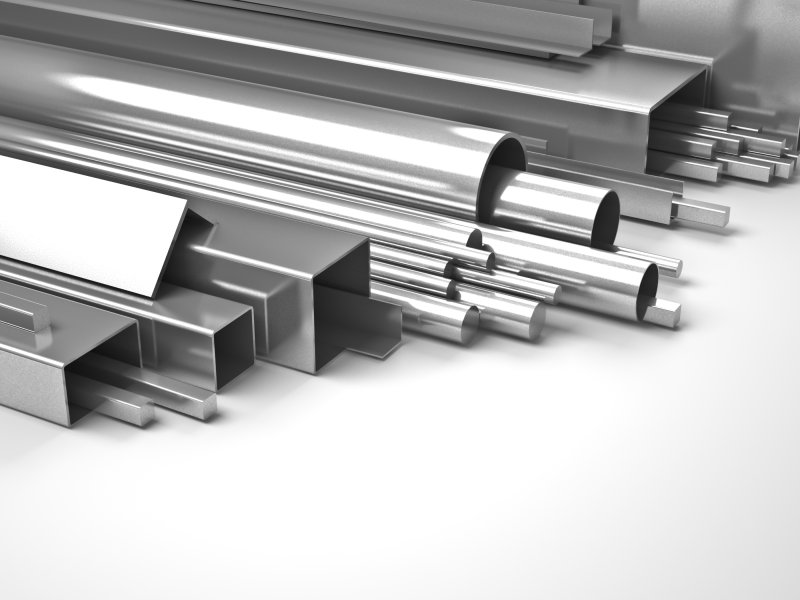| Stainless Steel Sheet (SAC) Weight Chart | |||
| THICKNESS (mm) | 1000×2000 mm | 1250×2500 mm | 1500×3000 mm |
| Sheet Weight | Sheet Weight | Sheet Weight | |
| 0.40 | 6.4 Kg | 10 Kg | 14.4 Kg |
| 0.50 | 8 Kg | 12.5 Kg | 18 Kg |
| 0.60 | 9.6 Kg | 15 Kg | 21.6 Kg |
| 0.70 | 11.2 Kg | 17.5 Kg | 25.2 Kg |
| 0.80 | 12.8 Kg | 20 Kg | 28.8 Kg |
| 1.00 | 16 Kg | 25 Kg | 36 Kg |
What is Stainless Steel?
Stainless steel is a type of steel that exhibits high resistance to corrosion thanks to alloy elements such as chromium, nickel, and molybdenum. This special metal is widely preferred in many industries for its aesthetic appearance and durability. It has a wide range of applications, from daily life to industrial production.
History of Stainless Steel
Initial Development
Stainless steel was first developed in the early 20th century, in 1913 by British metallurgist Harry Brearley. He discovered that adding chromium to steel alloys could provide resistance to rust. This invention created a major transformation in the metal industry after the industrial revolution.
Industrial Expansion
Initially used in cutting tools and kitchen utensils, stainless steel gradually found its place in the chemical, automotive, food, and construction industries. It became particularly important in modern architecture as a long-lasting, low-maintenance material.
Composition of Stainless Steel
The main component of stainless steel is iron (Fe). What distinguishes it from other steel types is its chromium (Cr) content. To be classified as stainless, steel must contain at least 10.5% chromium.
Key Alloy Elements
- Chromium (Cr): Provides corrosion resistance by forming a thin chromium oxide layer on the surface.
- Nickel (Ni): Increases ductility and impact resistance.
- Molybdenum (Mo): Enhances resistance in acidic environments; important for marine and chemical applications.
- Carbon (C): Adds strength but may reduce weldability if excessive.
How Stainless Steel Resists Rust
A thin chromium oxide film naturally forms on the surface of stainless steel. This film protects the steel from rust when exposed to oxygen. Even if scratched, the protective layer has the ability to self-repair, providing high durability in air, water, steam, acids, and bases.
Types of Stainless Steel
Stainless steels are classified based on microstructure and alloy composition.
1. Austenitic Stainless Steel
- The most commonly used type (about 70%).
- High nickel and chromium content.
- Non-magnetic, offers high ductility and weldability.
- 304 and 316 grades belong to this group.
2. Ferritic Stainless Steel
- Magnetic properties.
- Low carbon content, high temperature resistance.
- Commonly used in automotive exhaust systems.
3. Martensitic Stainless Steel
- High carbon content, therefore hardenable.
- Used in cutting tools, knives, and gears.
- 430 and 410 grades belong to this group.
4. Duplex Stainless Steel
- Combines both austenitic and ferritic structures.
- Provides high strength and corrosion resistance.
- Used in petroleum, gas, and marine industries.
5. Precipitation Hardening Stainless Steel
- Hardened by heat treatment.
- Used in aerospace and defense industries.
Features of Stainless Steel
Corrosion Resistance
The most important feature of stainless steel is its resistance to oxidation and rust.
Mechanical Strength
High tensile strength allows it to bear heavy loads and resist deformation.
Aesthetic Appearance
The shiny surface makes it suitable for modern structures and decorative products.
Temperature Resistance
Retains properties at temperatures as low as -200°C and does not deform up to 800°C.
Recyclability
100% recyclable, making it a green material in production.
Applications of Stainless Steel
Construction and Architecture
Used in facade claddings, railings, elevator doors, and decorative elements.
Food and Chemical Industry
Hygienic, used in food processing plants, dairy, beverage, and pharmaceutical industries.
Automotive and Transportation
Important for durability in exhaust systems, fuel lines, and structural parts.
Energy and Marine
Duplex stainless steel is used in petroleum, gas, and seawater environments.
Grades of Stainless Steel
304 Grade
- The most commonly used type.
- Moderate resistance in acidic environments.
- Used in household items and decorative products.
316 Grade
- More resistant to seawater and chemicals due to molybdenum.
- Used in ships, chemical plants, and medical devices.
430 Grade
- Magnetic, ferritic structure.
- Cost-effective.
- Common in home appliances.
Advantages of Stainless Steel
- Long-lasting, low maintenance cost.
- High heat and pressure resistance.
- Easy to clean, hygienic surface.
- Environmentally friendly and recyclable.
- Maintains aesthetic appearance for many years.
Disadvantages of Stainless Steel
- Initial investment cost is higher than other steel types.
- Some types are non-magnetic, which may be a drawback in certain industries.
- Incorrect welding can reduce corrosion resistance.
Conclusion
Stainless steel is one of the indispensable materials of modern industry. Its durability, aesthetics, hygienic nature, and eco-friendly properties ensure that it will remain important in many sectors. With proper grade selection and usage, stainless steel offers long-lasting and reliable solutions.





